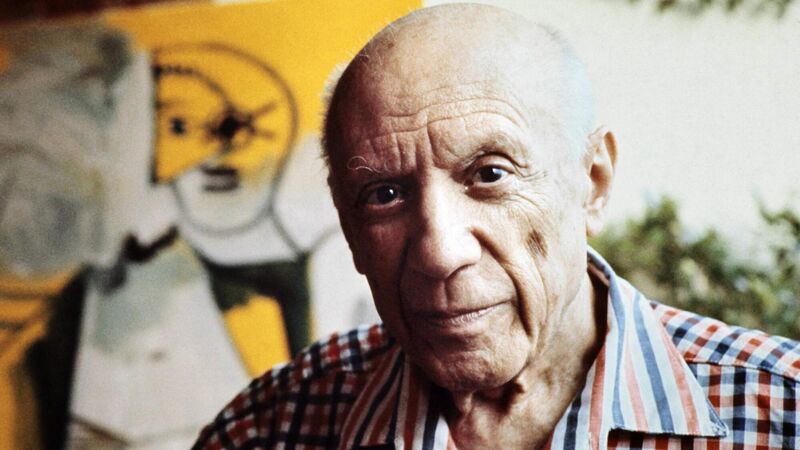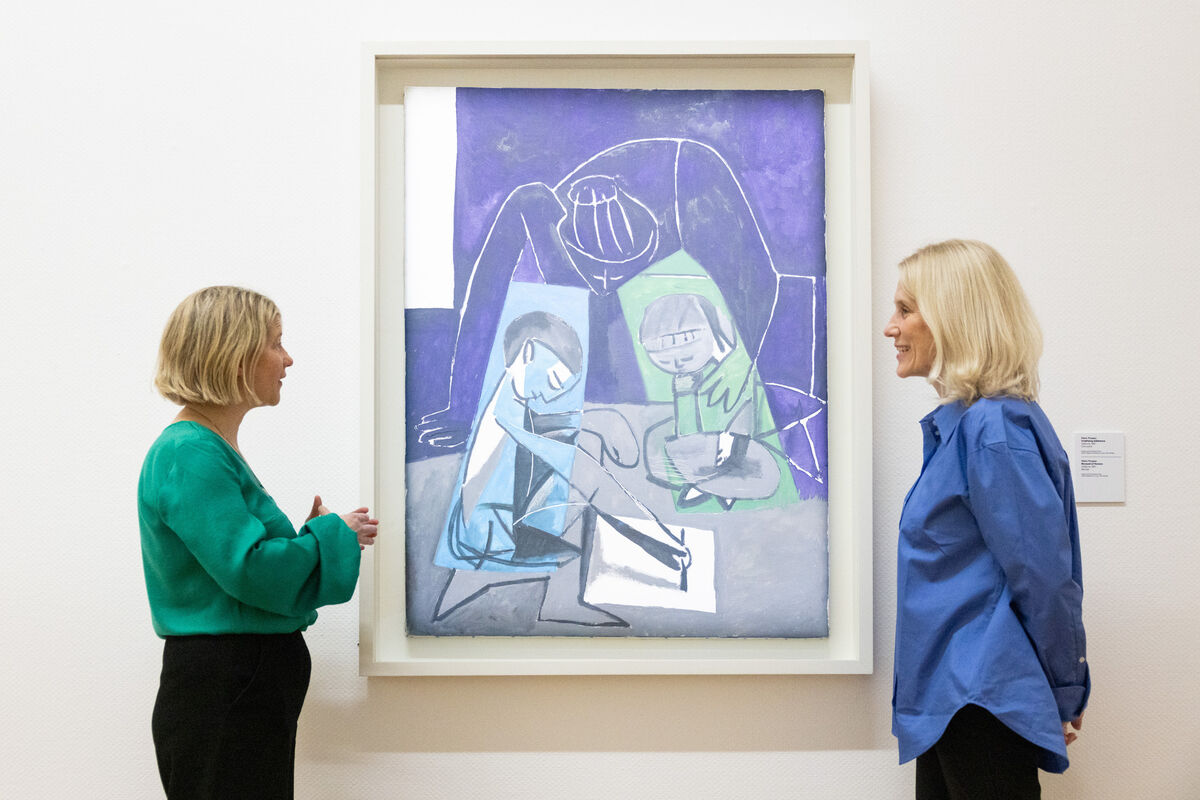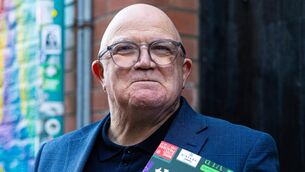Pablo Picasso: Irish exhibition features key works from the Malaga marvel's career

Pablo Picasso produced tens of thousands of artworks before his death in 1973, aged 91. (Photo by Raph GATTI / AFP)
Pablo Picasso famously described his art making as “just another way of keeping a diary". Born in Málaga, in southern Spain, in 1881, he moved to France at nineteen, working in a succession of studios that began as bare attic rooms in Paris and evolved into ever grander spaces as he became more and more successful. In each, he recorded the experiences of his colourful – and sometimes tumultuous – life, in a great outpouring of paintings, prints, drawings, sculptures and ceramics.
Picasso could be accused of many things, but idleness was not one of them; on his passing, aged 91, at his private Mas Notre-Dame de Vie estate in Mougins, it was discovered that he had 45,000 unsold artworks in his studios. He left no will, and his descendants settled his death duties by donating a large body of this work to the state, much of which is now housed at the Musée Picasso in Paris.
The National Gallery of Ireland has partnered with the Musée Picasso to produce its new exhibition, Picasso: From the Studio, which features key works from throughout his career.
“Picasso is known to have worked in 105 different spaces,” says Janet McLean, who co-curated the exhibition with the Musée Picasso’s Joanne Snrech. “They weren’t all studios, of course; he sometimes worked in cafés or hotels, or in friends’ houses. Obviously, we couldn’t cover all of those in one exhibition, so what we’ve done is focus on several key spaces beginning with those he worked in in Paris, and then on the Riviera, where he spent a lot of time after the First World War.”
Also featured in the exhibition is some of the work Picasso made at the Chateau de Boisgeloup in Normandy, which he bought in the 1930s. “He also kept on an apartment in Paris,” says McLean. “In 1936, the photographer and painter Dora Maar found him a studio on the Rue Grands Augustins near Notre Dame. That was where he painted Guernica.”
Guernica, which Picasso completed in 1937, is a monumental grey, black and white painting that commemorates the bombing of the Basque town by German Nazi and Italian Fascist aircraft. It was first shown at the Paris International Exposition that same year, and later toured to other venues around the world. The painting, long regarded as one of Picasso’s greatest achievements, is now in the Museo Reina Sofia in Madrid.
Picasso remained in Paris all through the Nazi occupation of World War II. It was only after the liberation that he moved to the south of France, where he settled first in Vallauris, on the Cote d’Azur; then at the Villa La Californie in Cannes; and finally at Mougins for the last twelve years of his life.
Picasso’s artworks chronicle not just the places he lived in, but also the many twists and turns of his relationships. In 1918, he married the Russian ballet dancer Olga Khokhlova, with whom he had his first son, Paulo. Fidelity was never his strong point; at 38, he met the 17-year-old Marie-Thérese Walter, they became lovers, and she eventually bore him a daughter, Maya.

“Picasso was obsessed with Marie-Thérese,” says McLean. “He painted her over and over again. The portrait we have in the exhibition also dates to 1937, not long after the start of the Spanish Civil War, which came as a shock and was totally abhorrent to Picasso. It’s a sweet and very loving portrait, and very different to Guernica and the other paintings he made that year. He only ever had good things to say about Marie-Thérese. He moved on eventually, but they were always very close. In later years, she wrote to him every day.”
Picasso met Maar in 1936, and they soon became an item. “At the beginning of a relationship, Picasso threw everything at it. The portraits would be very beautiful. But Dora herself said, Picasso never painted portraits of me, they’re portraits of Picasso. It’s all about him and how he’s feeling. The portrait we have in the exhibition is Bust of a Woman with a Blue Hat, from 1944, which was towards the end of their relationship. Dora’s features are really heightened, her eyebrows are kind of off kilter, and she’s gripping the chair. It’s quite an anxious portrait, I think.
“Picasso painted this portrait well into the occupation of Paris, and like a lot of paintings he made at that time, there’s a sense of claustrophobia. People are cornered, essentially. You can sense that kind of tension. It’s a very tight painting, but I don’t think it does Dora justice, because she was amazing. But it captures a moment, with everything that was happening around them.”
Although Picasso is best known as a painter, he worked in other media as well. At Vallauris, he learned to work in ceramics at a local workshop, and produced thousands of pieces in clay, including the sculpture Head of a Woman in 1953. “Picasso was looking at early Spanish ceramics and Etruscan art around that time. Head of a Woman looks so simple - the lines Picasso drew on the head are almost cartoonish - but it’s a stunning piece of work. Picasso must have thought so too. When he moved on to La Californie in Cannes, he made a series of drawings and paintings of his studio, and it’s always there. You can see it in film footage and photographs from that time as well.”
By 1944, Picasso had become involved with Francoise Gilot, who bore him his two youngest children, Claude and Paloma. All three feature in the painting Claude drawing, Francoise and Paloma, which he completed ten years later, shortly after he left Gilot for his final partner, Jacqueline Roque.
“Francoise was an artist too,” says McLean. “In a lot of photographs from that time, you see her on the floor, drawing with the children. Picasso was very particular about his studios. He was a real hoarder, and he didn’t like people interfering with his stuff. But he let the children make things and draw all around him, he was very good like that.”

Long after their break-up, Gilot wrote a book about Picasso that angered him so greatly he cut off all contact with her and their children. After his passing, they had to go to court to secure any share of his estate. They were not the first to experience his wrath, or to suffer from having been in his orbit; two of his partners – Walter and Roque – were so affected by his death that they committed suicide.
Whatever about the toxicity of at least some of his behaviours, Picasso’s status as one of the greatest artists of the 20th century is unassailable. McLean attributes his success to the fact that he never felt tied. "In his fifties, at an age when most people are slowing down, he started making big sculptures. And he always collaborated, with printmakers, metal workers, foundries and ceramic studios. He was always learning, and always trying new things, right up to the end.”
- Picasso: At the Studio runs at the National Gallery of Ireland until February 22 2026. See nationalgallery.ie



